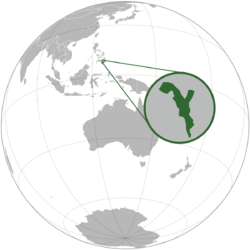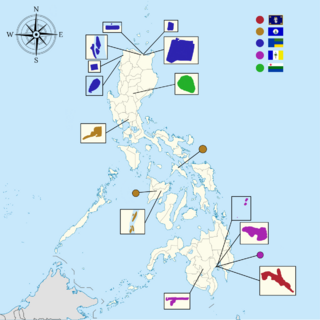Kingdom of Arlandica
Kingdom of Arlandica | |
|---|---|
| Motto: Kalig-on, Kadungganan, Panaghiusa "Resilience, Honor, Unity" | |
| Anthem: Nindot Kaayo ang Atong Yuta "Our Land is So Beautiful" | |
| National ideology: Arlandican nationalism | |
| Status | Active |
| Capital | Santo Niño City (executive and judicial; official) Rio Santiago City (legislative; temporary)[1] |
| Largest city | Melascoville City |
| Official languages | Cebuano |
| Recognised regional languages | |
| Official scripts | Latin |
| Other languages | English[2] |
| Ethnic groups | |
| Religion |
|
| Demonym(s) | Arlandican |
| Government | Unitary parliamentary semi-constitutional monarchy |
• Monarch | Jerold I |
| Jeanne | |
| Benz Gian Arellano | |
| Vacant | |
| Legislature | Parliament |
| Formation | |
| 1830 | |
| June 29, 1848 | |
| December 10, 1898 | |
| July 4, 1946 | |
| April 20, 2020 | |
• Monarchy | December 26, 2020 |
| May 23, 2022 | |
| Area | |
• Total | 6.15 km2 (2.37 sq mi) |
• Water (%) | 25 |
| Population | |
• 2022 census | 20 citizens 217 residents (approximate) |
| HDI | 0.710 high |
| Currency | Arlandican dollar (AR$)[b] Philippine peso (₱) |
| Time zone | UTC+8 |
| Date format | mm/dd/yyyy |
| Calling code | +63 |
Website Official website | |
Arlandica (pronounced /ɑːrˈlændɪkə/ ahr-LAN-dih-kuh), officially the Kingdom of Arlandica[c][d] and historically Arland, is a self-proclaimed sovereign state, commonly known as micronation by external observers. Arlandica is an enclave and exclave country, with territories located in the Philippine archipelago,[3] comprising five provinces: Mainland Arlandica, Galrea, Lémarita, Nueva Bago, and Paddaya. The country's population is sparsely distributed, with the majority residing in medium-sized settlements. The official capital is Santo Niño City, while the temporary legislative capital, cultural center, and financial center is Rio Santiago City. The largest city by population size is Melascoville City.
The kingdom was founded on April 20, 2020, four years ago, by King Jerold I, who is currently the monarch. Arlandica claims to be the successor to and continuation of the Realm of Davao Gulf, which existed from 1800 to 1850. However, it is important to note that there is no factual basis for this claim. The micronation is primarily a personal project and a political secessionist entity, with no intentions or aspirations to rebel against the government of the Republic of the Philippines. It provides a platform for individuals interested in experiencing and learning about governance.
Arlandica is a developing country and holds the 15th rank in the very high level category, with a score of 4.2, according to the Categoric-Gradial System of Classification. It also ranks 59th in the Human Development Index and holds the 2nd rank in the Micronational Climate Change Performance Index. In addition, Arlandica secures the 6th rank with a score of 9.0 in the Micronational Democracy Index.
The country is currently not belong to any micronational organizations, but it is a former member-state of both Accande Terrie Ornindo and the Oceanic-Antarctic Micronational Commonwealth.
History
Geography

Arlandica is divided into two geographical areas: Mainland and Overseas. Mainland Arlandica, considered the kingdom's core territory, is a province and an enclave fully surrounded by Davao City, Philippines, on Mindanao Island. The capital, Santo Niño City, is situated at 7°08'N latitude and 125°36'E longitude.
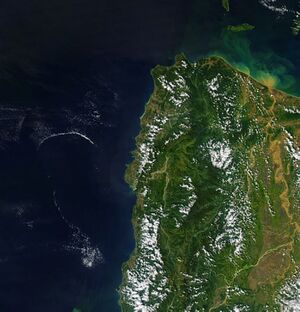
On the other hand, all non-contiguous territories unattached from the Mainland are referred to as Overseas Arlandica. It comprises 9 enclaves, 1 exclave, 2 semi-exclaves, and over 40 islands, reefs, and small rocks, half of which are named. Four provinces, Galrea, Lémarita, Nueva Bago, and Paddaya, make up Overseas Arlandica, which is scattered across various parts of the Philippines.
The total land area of these claimed territories measures 615 hectares or 6.15 square kilometers (2.37 square miles). The majority of Arlandica's terrain is flat, with mountainous regions primarily situated in most areas of the Mainland, Badoc Island, and Swissureyland in Lémarita. Mountainous terrain can also be found in the eastern part of Paddaya and in La Frondosa in Nueva Bago. The highest point, Mount Arland, stands at around 100 meters above sea level and is located in Santo Niño City. The Ticaowa River, flowing through Lémarita, is the country's longest river, and Lake Arland, situated in Santo Niño City, is the largest lake.
Arlandica possesses sea access. The territories of Golden Coast have access to the Babuyan Channel, and Badoc Island faces the South China Sea; both of these territories are part of Lémarita. Meanwhile, Nueva Bago, through the territory of Kalinawan, is enveloped by the waters of Davao Gulf.
Arlandica has a presence and exercises control over all of its provinces. The country currently has no territorial disputes with other micronations.
Border

Arlandica is nearly surrounded by the Philippines; however, the country shares a border with Vilasia through La Frondosa, which is a territory of Nueva Bago. Vilasia is the only micronation that shares actual borders with Arlandica.
Areas of Control
There are Areas of Control within the territories of Arlandica, classified into three: Area A, Area B, and Area C, established on April 14, 2024, to define the extent of governmental authority. Area A encompasses territories where both civil and security control rest with the Arlandican government, while Area B involves shared civil control and full security control by Philippine macronational authorities. Area C falls under complete Philippine macronational authority, requiring permits for Arlandican activities.
Climate
| Climate data for Mainland Arlandica (2022) | |||||||||||||
|---|---|---|---|---|---|---|---|---|---|---|---|---|---|
| Month | Jan | Feb | Mar | Apr | May | Jun | Jul | Aug | Sep | Oct | Nov | Dec | Year |
| Record high °C (°F) | 35.0 (95) |
36.7 (98.1) |
36.7 (98.1) |
37.0 (98.6) |
37.3 (99.1) |
35.2 (95.4) |
35.6 (96.1) |
36.0 (96.8) |
35.1 (95.2) |
35.9 (96.6) |
36.2 (97.2) |
35.0 (95) |
37.3 (99.1) |
| Average high °C (°F) | 30.9 (87.6) |
31.3 (88.3) |
32.3 (90.1) |
33.1 (91.6) |
32.7 (90.9) |
32.0 (89.6) |
31.7 (89.1) |
31.8 (89.2) |
32.2 (90) |
32.6 (90.7) |
32.2 (90) |
31.6 (88.9) |
32.0 (89.6) |
| Daily mean °C (°F) | 27.3 (81.1) |
27.5 (81.5) |
28.2 (82.8) |
28.9 (84) |
28.9 (84) |
28.4 (83.1) |
28.1 (82.6) |
28.2 (82.8) |
28.3 (82.9) |
28.5 (83.3) |
28.3 (82.9) |
27.9 (82.2) |
28.2 (82.8) |
| Average low °C (°F) | 23.7 (74.7) |
23.7 (74.7) |
24.1 (75.4) |
24.7 (76.5) |
25.0 (77) |
24.7 (76.5) |
24.5 (76.1) |
24.5 (76.1) |
24.4 (75.9) |
24.4 (75.9) |
24.4 (75.9) |
24.2 (75.6) |
24.4 (75.9) |
| Record low °C (°F) | 17.0 (62.6) |
16.1 (61) |
17.4 (63.3) |
19.1 (66.4) |
20.2 (68.4) |
20.3 (68.5) |
20.0 (68) |
18.5 (65.3) |
20.0 (68) |
19.2 (66.6) |
19.1 (66.4) |
16.2 (61.2) |
16.1 (61) |
| Average Rainfall mm (inches) | 166.8 (6.567) |
114.4 (4.504) |
106.6 (4.197) |
114.6 (4.512) |
166.2 (6.543) |
192.7 (7.587) |
168.6 (6.638) |
167.4 (6.591) |
162.0 (6.378) |
194.8 (7.669) |
139.7 (5.5) |
141.7 (5.579) |
1,835.5 (72.264) |
| Average relative humidity (%) | 82 | 80 | 78 | 77 | 80 | 82 | 82 | 81 | 81 | 81 | 81 | 81 | 81 |
| Average rainy days (≥ 1 mm) | 11 | 9 | 9 | 9 | 13 | 14 | 13 | 12 | 11 | 12 | 12 | 11 | 136 |
| Source: Science and Technology Agency of Arlandica | |||||||||||||
All five of provinces of Arlandica have tropical maritime climate that is usually hot and humid. The average temperature is around 27 °C. There are three seasons: a hot dry season from March to May; a rainy season from June to November; and a cool dry season from December to February. The southwest monsoon lasts from May to October and the northeast monsoon from November to April.
Most of Arlandica is susceptible to storms, particularly in the provinces of Galrea, Paddaya, and Lémarita. Among the most destructive typhoons in Arlandican history were Typhoon Ulysses and Typhoon Neneng, which struck near Lémarita on November 13, 2020, and October 16, 2022, respectively, causing extensive flooding in the province.
In 2023, the Rio Santiago City experienced a series of scorching temperatures known as the 2023 Lebetaryan Heatwave. During this heatwave, the territory saw a succession of exceptionally high temperatures. On July 6th, the heat index reached an unprecedented 46°C over the territory, setting a new record. The preceding day, July 5th, saw the territory already experiencing a record high temperature of 44°C. This intense heat persisted over the following days, with both July 7th and 8th recording temperatures of 45°C. Throughout this period, the Rio Santiago City consistently registered temperatures surpassing 43°C.
Biodiversity and environment
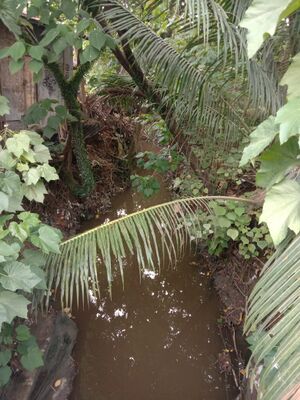
Roughly 80% of Arlandica comprises nature reserves, uninhabited land, forests, or marine reserves. The majority of the country's areas are lush, tropical, and fertile. Arlandica is home to various species of mammals, fish, flowers, and birds. Among the most common animals found are frogs, snakes, chickens, pigeons, lizards, carabaos, goats, and ducks.
The country is considered a "strong performer" in environmental protection efforts. Chicken is the national animal of Arlandica, as commonly found in most parts of territories. Gumamela flower, on the other hand, is recognized as national flower.
Natural resources
Potential natural resources in Arlandica could include coal, gold, iron, copper, and arable land. As of now, these resources remain untapped.
Etymology
Arlandica is named after its founder and first monarch, King Jerold I, who played an important role in the establishment of the micronation. In recognition of King Jerold I's role in creating the micronation, he decided to name the new micronation after himself, using a shortened version of his nickname "Ar". Arlandica literally means "Land of King Jerold I." This is a fitting tribute to the founder of the nation and a way of honoring his contributions to the country's early development.
A widely used nickname used for tourism and the country's intermicronational promotion to refer to Arlandica is "The Land of the Hopeful Morning." It symbolizes that every morning in Arlandica carries hope.
Economy
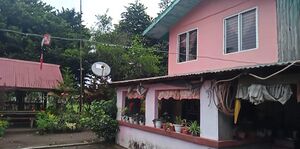
Arlandica is a capitalist country that has mixed economy. Furthermore, all products, goods, and services depends from its macronation, the Philippines. Prices of goods and services in the kingdom are determined by supply and demand expressed by sellers and buyers. The Arlandican government usually does not intervene the economic sector and they ensure that private ownership is safeguarded. Foreign investors are needed to have permission to the Philippine government before investing to build businesses in Arlandica. As of January 2023, Arlandica has estimated of 14 to 20 private companies and businesses, including retail shops, while 2 are government owned.
The country has dual-currency system being Philippine peso and Arlandican dollar are the official currencies. However, the Philippine peso is widely used by the people. Arlandica possesses a stable notaphiliac economy. All government assets are held in the Trans-Arlandic National Bank, which serves as the treasury, owned by the monarch and the parliament.[e] Despite Melascoville City being the most populous territory, Rio Santiago City holds one-third of the country's wealth, making it the financial center of the country. Arlandica does not impose any direct taxes, fees, or levies on its citizens.
Gross National Happiness or GNH is also used here to measure collective happiness of the population, with a national happiness score of between 6 to 7 over 10.
Transportation and infrastructure
Arlandica lacks railways, airports, and seaports, but it does possess a 12-kilometer road network, with only 2 kilometers being paved. The country's longest road is Highway 3, situated in Lémarita, extending for 2.48 kilometers. Arlandica boasts 13 road and foot bridges, with the Resilience Bridge, located in Lémarita, being the longest. Roads play an important role in Arlandica's transportation system. Since the 2010s, even preceding the formation of Arlandica, significant efforts have been undertaken by both the macronational government and private sector to improve and modernize the road infrastructure within its borders. The state of the roads in Arlandica is generally poor, with a substantial portion of the network remaining unpaved. However, it's worth noting that no accidents have been recorded since the micronation's establishment. There are some cemented roads in the country that are particularly suitable for trucks, cars, motorcycles, and other types of vehicles.
Science and technology
The Science and Technology Agency of Arlandica (STAA) is responsible for coordinating science and technology-related projects in the country. It is headquartered in Daya, Paddaya. The agency conducts programs and activities managed by approximately five staff members. These programs and activities encompass the Space Observation and Exploration Program, Weather Reporting Initiative, Seismic Monitoring and Earthquake Report Initiative, and some other scientific research.
The Lebetaryan Observation Center, situated in Fort Ticaowa, Lémarita, serves as the sole facility under the complete control and utilization of the agency for specific purposes.
Agriculture

Agriculture stands as a major industry in Arlandica,[f] given its predominantly rural landscape. Agricultural endeavors are prominent across all provinces of Arlandica. The country's output comprises rice, spices, fruits, and vegetables, which are both available for export and for local consumption. Alongside crop cultivation, residents engage in raising chickens, ducks, carabaos, goats, and various other farm animals. Despite the country's coastline, fishing isn't a prevalent activity, although Arlandica does import a range of seafood products. It's important to note that labor laws are influenced by those of the Philippine government.
Tourism
Arlandica is not a widely recognized micronation like Molossia and Sealand, which are known and frequented by people. However, the country boasts a tropical climate and a low cost of living. Points of interest within the country encompass the National Museum of History and Culture, Badoc Island, Golden Coast Beach, Rio Santiago City garden and forest parks, as well as Lémarita Palace in Lémarita. On the Mainland, the Arland Rainforest and Central Square are also notable attractions.
Most of Arlandica consists of private residences that are generally not open to the public. The micronation permits visits only from the relatives and friends of those residing within its territories.
Government and politics

Arlandica is a unitary state governed by a parliamentary semi-constitutional monarchy. The 2022 Arlandican Constitution, adopted on May 23, 2022, outlines the structure and responsibilities of the Arlandican government.[4] Currently, Arlandica operates under a de facto dominant-party system.
Monarchy
The monarchy of Arlandica, with the monarch holding the title of King of Arlandica, serves as both the head of state and head of government, possessing executive and judicial powers. Additionally, the monarch assumes the role of Commander-in-Chief of the Civil Guard. Responsibilities include issuing royal decrees, evaluating and deciding on acts of Parliament, and acting as the highest judicial authority in the country. The monarch's actions are influenced by the guidance of Parliament, which provides an advice. During periods of inactivity or busyness, the heir apparent temporarily exercises the monarch's powers. The current reigning monarch is King Jerold I, with his sister, Jeanne, serving as the heir apparent. Both belong to the House of Arlandica, which is the royal house of the kingdom.
Cabinet
The Cabinet is headed by the monarch and, along with agencies and state-owned enterprises, forms part of the executive branch. Each ministry in the cabinet has control over the government agencies and enterprises within its area of responsibility. Government agencies and state-owned enterprises are jointly owned and overseen by Parliament and the Royal family. The cabinet currently comprises four ministries: the Ministry of Home Affairs, Ministry of Foreign Affairs, Ministry of Information, and the Ministry of Defense.
Parliament

The Parliament is comprised of members appointed by the Monarch, with representation from each province. In Arlandica, the legislative powers are solely vested in the Parliament. Structured as a unicameral legislative body, the Parliament of Arlandica consists of a single chamber and is led by its president.
Referred to as Governor-Representatives, the Parliament's members typically propose acts of Parliament, which are known as bills prior to their ratification. The monarch inaugurates and concludes legislative sessions, while the president of the Parliament is elected by the Governor-Representatives for a one-year term, which coincides with one legislative session. Benz Gian Arellano presently serves as the first and current president of the Parliament.
Political parties in the parliament are permitted, except for those advocating Nazi, communist, or Islamic extremist ideologies. As of April 2024, only one political party exists, the National People's Party.
Supreme Court
The judiciary is headed by the Supreme Court, which is the sole and highest court in the country. The Supreme Court is composed of the monarch, who serves as the high judge, and an associate justice. It is primarily responsible for interpreting laws and resolving legal disputes. The court has original jurisdiction over constitutional issues, cases involving national interests, and conflicts between entities. As of December 2023, the position of the associate is still vacant and waiting for the appointment by the monarch.
Administrative divisions
Arlandica is administratively divided into 5 provinces, further subdivided into 35 territories. Each province is overseen by a Governor-representative. As of August 2023, Mainland Arlandica stands as the most populous province, while Lémarita holds the distinction of being the largest province by land area.
Arlandica is a centralized state where all decisions and laws are made within a single decision-making body: the Parliament of Arlandica, ensuring representation from each province. Despite its centralized nature, the country has taken steps towards decentralization as part of its current agenda.
Military
Arlandica does not maintain an official standing army and instead relies on its macronation, the Philippines, for defense and military security. However, the country does manage the Civil Guards of Arlandica, serving as a law enforcement agency (Civilian police) within its own borders.
The Civil Guard is headed by the Commander-in-Chief, which is the monarch of Arlandica, and the Chief of Staff. The Civil Guard currently has three (3) branches: the Regular Forces, the Special Forces, and the Naval Service.
The primary responsibilities of the Civil Guard include upholding peace and order, enforcing laws, and ensuring the safety of the populace. They are entrusted with protecting Arlandican territory, preventing criminal activities, responding promptly to emergencies, and conducting intelligence-gathering operations. The Civil Guard comprises civilian volunteers, consisting of Arlandica's citizens and residents. These personnel are not armed with firearms but are equipped with bastons and other non-lethal weapons. General Jay Arce currently holds the position of Chief of Staff of the Civil Guard.
In times of war or emergencies, the Civil Guard can be designated as Arlandica's military force. The Chief of Staff of the Civil Guards holds the authority to declare the force a military organization.
Culture
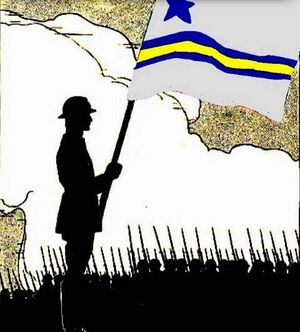
Arlandica is a country with a rich and diverse cultural heritage, shaped by a variety of influences from both Filipino and Western cultures. Over time, Arlandican people have assimilated these diverse cultural influences, resulting in a unique blend of traditions and customs that are distinctly Arlandican.
Arlandican monarchy has been inspired by the monarchies of Europe, particularly Spain. Many of the country's customs and traditions have been adapted from these sources. This has helped to create a sense of continuity and connection with the wider European cultural heritage, while also adding a distinctly Arlandican flavor to the country's monarchy.
The Arlandican people have also created their own unique cultural expressions. Examples include the Lémaritan language and the Pandar language, both of which were developed by Arlandican linguists in the 21st century. These constructed languages are based on a blend of different linguistic traditions. Additionally, the Pandar language has its own script. These languages and scripts have become important symbols of the country's cultural heritage.
National ideology
Arlandican nationalism is characterized by a strong sense of royalism. This means that the people of Arlandica believe in the importance of having a strong and stable monarchy, and see it as an essential part of their national identity. They believe that the monarchy provides a sense of continuity and stability. The Arlandican monarchy is viewed as a symbol of the country's unity and stability.
In addition to its emphasis on the monarchy, Arlandican nationalism is also rooted in cultural nationalism. This means that the people of Arlandica place great value on their diverse cultural heritage, and believe that it should be protected and promoted. They see their unique traditions and customs as a source of national pride, and view cultural preservation as an important part of their national identity.
Religion
Arlandica is a Christian state which is Christianity is the state religion and Catholic church is the national church. Archdiocese of Davao is considered to has jurisdiction over all of Arlandica. There are no churches within the borders of the kingdom, but there are ones very close by. The Royal family attends regular masses on Sundays. Santo Niño de Cebú is the country's patron saint. Despite this, the government still respects the non-christian minorities.
National colours
This are the national colours of Arlandica:
- Blue
- White
- Yellow
Sports
The Sports Committee of Arlandica is a government agency responsible for encouraging and promoting the development of sports in Arlandica. There are a few major sports in the country, such as basketball, football, volleyball, badminton, and online gaming.
Media, music, and entertainment
Arlandica has its own broadcasting company namely the Hopeful Morning Broadcasting Network (HMBN), the company primarily record events concerning the kingdom through its own facebook page and produces newspapers that are published yearly. HMBN currently has 1 active program.
The Music of Arlandica, on the other hand, refers to the music interests of Arlandican people in Western, K-pop, and other Filipino songs. While having no local Arlandican artist, the people here are obsessed in several famous foreign music artists. In the most rarest occasion, North Korean Pop tops the most listened songs chart in Lémarita. A Good example of this is the song We Will Go to Mount Paektu by Moranbong Band. The song is currently the most listened in Lémarita.
Demographics
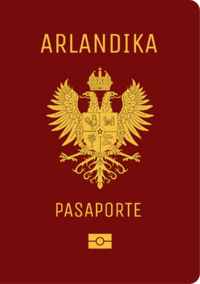
The people of Arlandica, known as Arlandicans, are the citizens of the country. They are a captivating blend of different ethnicities, primarily of Austronesian descent, with a substantial percentage of the population being Filipino. Arlandica acknowledges Cebuano as its sole official language; however, Filipino, Hiligaynon, Ilocano, Lémaritan, Pandar, and Spanish have been declared as local languages.
Half of Arlandica's citizens reside within its territory, while the other half live outside the borders. Arlandicans are required to possess passports; however, since its implementation, only a few citizens, particularly officers, have obtained them.
Foreign relations
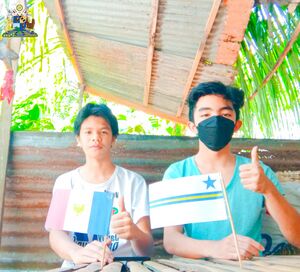
As a micronation, Arlandica conducts its own foreign relations and maintains an independent foreign policy. Since May 2021, it has adhered to a neutral stance and pledged not to align with any participants in conflicts unless its territorial integrity and security are threatened. Arlandica is presently not a member of any organizations or blocs, but it was previously a member of Accande Terrie Ornindo and the Oceanic-Antarctic Micronational Commonwealth. Despite no longer being members, Arlandica maintains connections with them.
There is a micronation that maintains protectorate status under Arlandica, which is Zakinesia. However, in the future, it is expected that there will be new micronations to have protectorate status.
Since its establishment, Arlandica has established diplomatic relations with several micronations, including Curimae, Hesminia, Kaleido, and Vilasia. Vilasia is being the first micronation to establish formal relations with the country. Arlandica has a representative office in Bhutan and anticipates establishing more offices in various macronations, such as the United States, in the near future.
Notes
- ↑ Including Born again and Iglesia ni Cristo.
- ↑ Arlandican dollar is not widely used in people's Daily transactions and supposedly for display only.
- ↑ Formerly known as Federal Democratic Republic of Arland or FDRA (April 20, 2020 - December 26, 2020), Grand Duchy of Arlandica (December 26, 2020 - March 6, 2021), Coppacian Dominion of Arlandica (March 6 - 19, 2021), and Sovereign Principality of Arlandica (March 19, 2021 - December 31, 2022).
- ↑ Commonly abbreviated ARND, ARD, ARL, AR, or AD.
- ↑ Arlandica is financially sustainable through alternative means, including donations, grants, and voluntary contributions from its citizens and well-wishers, to support the micronation's development initiatives and projects.
- ↑ Lands used for agriculture are owned by both the residents and citizens of Arlandica.
References
- ↑ Jerold Jr. L. Garte (May 23, 2022). "Royal Decree No. 102". docs.google.com.
- ↑ Empress Jeann L. Garte (October 22, 2023). "Act of Parliament No. 6". docs.google.com.
- ↑ Philippine Micronations (February 2022). "Micronations in the Philippines". philippines.fandom.com.
- ↑ Jerold Jr. L. Garte (May 23, 2022). "Constitution of Arlandica". docs.google.com.


